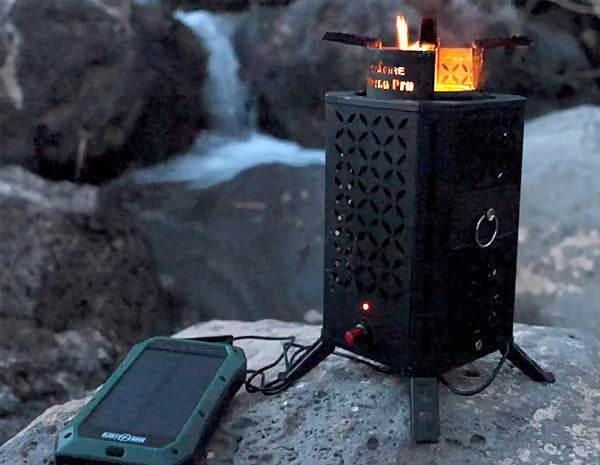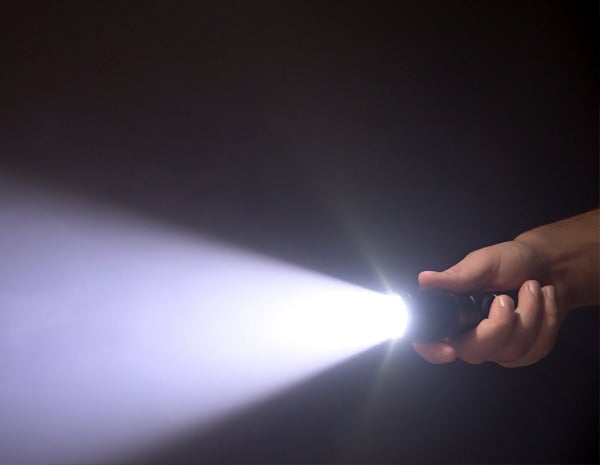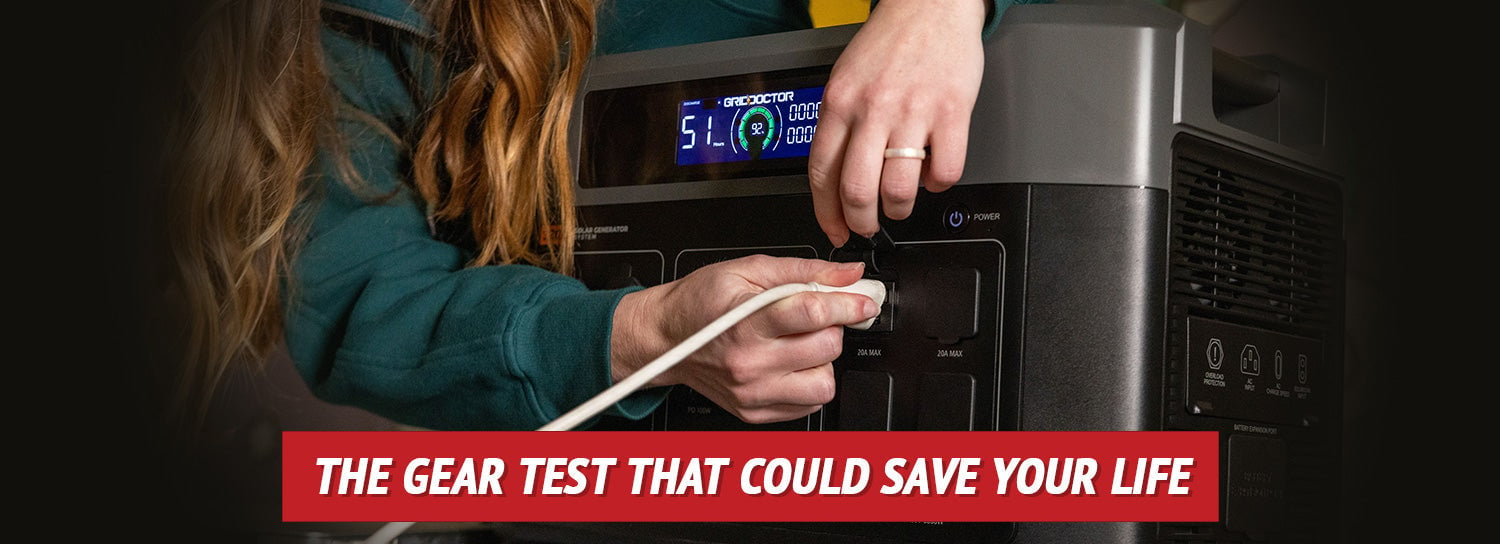
Quick Summary: Test Your Gear before the Storm
Don’t wait for disaster to learn how your emergency gear works. Simulate a real blackout—at night—and practice using your lighting, water, food, sanitation, and generator systems. Test your Alexapure, Vesta stove, radios, and backup power now to find gaps before it’s too late. Practicing in the dark is the only way to truly prepare.
Table of Contents
- Why You Should Practice a Blackout before It’s Real
- How Do You Simulate a Realistic Blackout?
- Do You Have Enough Portable Lighting?
- Will You Have Enough Water in an Emergency?
- What Will You Eat and How Will You Cook It?
- What Will You Do about Sanitation?
- How Well Does Your Generator Work?
- How Will You Communicate with the Outside World?
- What Critical Gaps Will a Blackout Drill Help You Discover?
Why You Should Practice a Blackout before It’s Real
You’ve got the gear, but when disaster strikes and the adrenaline kicks in, do you actually know how to use it?
The middle of a blackout is the worst time to be reading instructions on how to use your gear.
Do you know how to fire up your Ember Oven or Instafire stove or plasma lighter?
Do you know how to get your generator running or use your Alexapure?
With summer storms and hurricanes often striking in the evening, chances are high that your next emergency will start in the dark.
The only way to be ready is to practice.

Make time to test your gear.
Cook your emergency food.
Test how well you fare in the dark
Simulate an extended blackout this weekend to help you identify critical gaps in your preparedness plan.
How Do You Simulate a Realistic Blackout?
Follow these steps to simulate a realistic blackout in your home safely.
- Prepare your family members that this will be taking place in advance. This will avoid unnecessary panic, especially if you have young children.
- Turn off all essential devices and appliances, or make sure they are protected by surge protectors.
- Locate your home’s main electrical panel and turn off the main circuit breaker.
- Turn off water heaters.
- Disable your Wi-Fi router and mobile data (for a true blackout experience).
Once your home has gone dark, it’s time to test your gear and see how your family handles the experience.
Use the following questions to help you identify any gaps in your blackout preparedness plan.
Do You Have Enough Portable Lighting?
The first thing you need to check is your portable light sources, such as flashlights or lanterns.
Do you have extra flashlights? Are they bright or dim?
Do you have plenty of batteries for flashlights and other light sources?
In addition, you should also prepare for lengthy blackouts, which require more than flashlights and candles.
Solar-powered light sources are a better long-term option.
Even in a blackout, the sun still shines.

My Patriot Supply offers the following solar powered items:
- Portable Solar Oven
- Solar Heated Camp Shower
- Solar Rechargeable Flashlight
- Wireless Solar PowerBank Charger
- Emergency Solar Power Flashlight & AM/FM Weather Radio
Will You Have Enough Water in an Emergency?
One of the most critical issues during an extended blackout is lack of clean water.
If the power grid is down for an extended amount of time, water treatment facilities will not be able to operate.
Moreover, weather events often cause water sewage facilities to fail, which leads to contaminated water and boil-water advisories.
This is why it is imperative to have a stock of clean water and gear that filters water.
This is why we suggest people invest in an Alexapure Water Filtration System and stores of emergency water pouches.
Now, as someone with a preparedness mindset, let’s assume you already have an Alexapure Water Filtration System and water tubs.
You will need water for drinking, cooking, cleaning, personal hygiene, and sanitation.
Do you have enough to last?
Do you know how many gallons of water you can clean using the Alexapure based on the current filter?
Think carefully during your blackout simulation as you use water so you can better prepare for the real event.
What Will You Eat and How Will You Cook It?
During a blackout, you don’t want to open and close your refrigerator.
Your blackout simulation is the ideal time to eat your long-term emergency food because it only requires water and heat (no refrigerated items or refrigeration needed).
In addition, you should use this as an opportunity to test your cooking gear.
During the blackout simulation, try out your Inferno PRO Outdoor Biomass Stove by InstaFire.
The Inferno Pro is fueled by biomass and heat-controlled with a battery or USB-powered fan.
With a temperature range of 425°F to 1,200°F, you can keep foods from being burned or undercooked. And when used with Fire Starter Pouches, Fire Pucks, and even sticks and twigs, you can boil water in two minutes.
This is also the time to consider how meals will be served and cleaned.
For example, during the blackout simulation, try to cook, serve, and clean as you would in the real event.
If you plan to use real plates and utensils, you will need to use water to clean them.
For this reason, you may discover you want to stock up on paper products and plastic utensils.
What Will You Do about Sanitation?
Sanitation is an often forgotten part of blackout preparation, but once you live through one, you don’t forget it.
For example, we once lived in a house that had a sump pump.
After a hurricane left us without power for days, we could not use our toilets…at all.
At the time, we did not have a generator and ended up relocating to stay with family until the power came back on.
But this isn’t always an option, which is why it is critical to consider sanitation issues.
For instance, depending on your plumbing, you may need to manually add water to help the toilet flush, or you may be unable to use your toilet.
In the event you can flush but need water, will you have enough extra water to do so?
In the event you can’t use the toilet, what will you do with your waste?
Others in this position may opt for a camp toilet and a burn barrel for waste.
In addition to using the bathroom, you also must consider home sanitation, such as cleaning up messes.
Do you have dish soap and liquid bleach with your emergency supplies?
Also, be sure to consider personal sanitation.
During the simulation, make sure your family members understand that the hot water will disappear, making showers difficult.
Do you have personal cleaning supplies, such as deodorant, wipes, and dry shampoo?
How Well Does Your Generator Work?
Given that power outages are increasing in frequency and length, everyone needs a generator.
You will also need to make sure you have fuel to power your generator (if it isn’t solar powered).
Keep in mind that during a real event, you may find yourself struggling to find a gas station that is working, thereby making it difficult to keep your generator running.
You also need a generator that will do more than power just a few lights or charge cell phones.
As you’ll discover during your simulation, you need a powerful generator like the Grid Doctor 3300 that can power electric medical supplies and refrigerators without power blips.
You absolutely must test your generator during this blackout simulation.
We have friends who lived through the wild hurricane that impacted the North Carolina mountains last fall.
This was a once-in-a-lifetime event for those in the area, and while some had generators, they didn’t know how to use them.
Someone I knew actually had to help several neighbors start their generators because they had never done it before.
Don’t wait until you are forced to use your generator to see how it works.
You want to test your generator and work out any issues.
For example, if you own a solar-powered generator, do you need to invest in additional solar panels to get better coverage for your home’s essentials?
NOTE – This is also the ideal time to test your carbon monoxide detectors, as many people suffer from carbon monoxide poisoning during power outages from misusing generators and gas ovens.
How Will You Communicate with the Outside World?
During a true blackout, cell phone communication will be cut off.
In this case, how will you communicate with the outside world?
Test your two-way radios, such as walkie-talkies or CB radios, during the simulation.
Figure out how to operate your weather radio.
Try out a portable power bank with a solar panel for your mobile device.
What Critical Gaps Will a Blackout Drill Help You Discover?
In addition to the areas we’ve covered above, there are some other considerations to keep in mind during your blackout simulation.
- Home Evacuation Plans. Do any areas of your home rely on power to function, such as garage doors or gates? If so, do you know how to open them manually?
- Generator Strengths and Weaknesses. Take notes of your current generator’s strengths and weaknesses. Do you need to consider upgrading to a more powerful generator, or can you add on power?
- Necessary Gear Components. Make a list of any emergency gear that you discovered requires more components, such as batteries, cables, or additional filters.
- Ease or Difficulty of Using Gear. If there is emergency gear you struggle with during the simulation, set it aside so that you can learn how to use it more effectively in the real event.
- Overreliance on Digital Tools. You may discover that you rely on your mobile device and the internet more than you realize. For example, do you have the instructions for all your gear, or are you used to going online and finding directions? If this is the case, print out directions as needed.
Test your gear in blackout simulation and make adjustments, friends.
In liberty,
Elizabeth Anderson
Preparedness Advisor, My Patriot Supply





